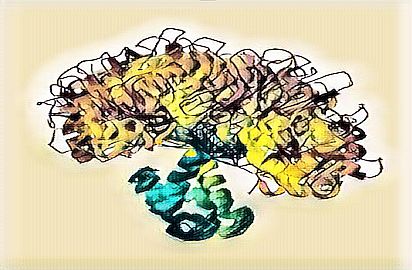About us
About us
Our research group was formed in 2020 based on previous collaborations and joint applications. We investigate the relationship between the structural dynamics and function of proteins, as well as the interactions between proteins using modern biophysical methods. Our tool library includes time-resolved and steady-state fluorescence spectroscopy, infrared spectroscopy, dynamic light scattering, isothermal titration calorimetry, microscale thermophoresis and quartz crystal microbalance.
Research areas
• Examining the conformational dynamics of calmodulin in physiologically relevant calcium ion concentrations: In the cytoplasm of living cells, the concentration of calcium ions in resting cells is around 100 nM, which can reach a few μM levels as a result of activation, the highest concentrations can be measured in muscle cells, about 15-18 μM. Calmodulin is one of the most important proteins that mediates the effect of calcium ions, potentially modifying the function of hundreds of partner proteins. Its intracellular concentration is typically a few μM, but it can be higher in neurons. Calmodulin has 4 calcium binding sites with affinities ranging from ~hundred nM to ~μM. According to the currently accepted picture, in the resting cell, calcium-free calmodulin is in a closed conformation, which becomes open as a result of the binding of 4 calcium ions, and binds the target proteins at the new binding sites that become accessible. It can be seen in the light of the above numbers that there will probably never be more than one or two calcium ions bound in calmodulin, so how does calmodulin work in the living cell, with physiological calcium levels?
• Examination of lipid receptors linked to G-proteins: Some lipid-based molecules are not components of membranes or energy stores, but act as messenger molecules in signaling processes. Among these, the physiological effects of lysophospholipids and endocannabinoids are often opposite, although their molecular structure is similar. The question is, what differences in structure-function relationships are responsible for these different physiological effects?
• The role of protein-lipid interactions in signal transmission: The target proteins of lipid messenger molecules are only partially known, this is especially true for lysophospholipids, even though they regulate many basic physiological processes. We study the lysophospholipid binding of transport proteins and signaling protein domains in order to elucidate lipid signaling processes.


